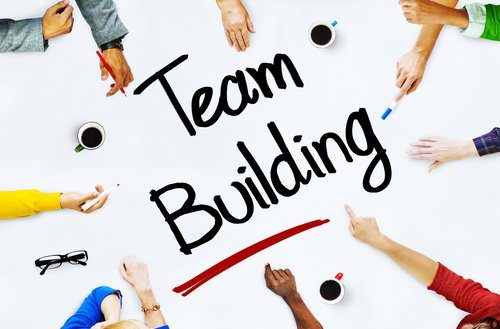Navigating Conflict: Building Resilient Teams Through Conflict Resolution

Empowering teams is essential for fostering collaboration, innovation, and high performance within organizations. Effective team building requires more than just assembling a group of individuals; it requires intentional leadership strategies to 團隊建設 create an environment where teams can thrive. In this comprehensive guide, we’ll explore leadership strategies for empowering teams, fostering a culture of collaboration, and achieving collective success.
- Cultivating a Shared Vision and Purpose: A shared vision and purpose provide teams with a sense of direction and motivation. As a leader, it’s essential to articulate a compelling vision that resonates with team members and aligns with the organization’s goals. Here’s how to cultivate a shared vision and purpose:a. Communicate the Vision: Clearly communicate the organization’s mission, values, and long-term objectives to the team. Explain how each team member contributes to the realization of the vision and why their work is meaningful.b. Solicit Input and Feedback: Involve team members in the vision-setting process by soliciting their input and feedback. Encourage open dialogue and collaboration to ensure that the vision reflects the collective aspirations and priorities of the team.c. Inspire Commitment: Inspire commitment to the vision by demonstrating your own passion and dedication. Lead by example, and show unwavering commitment to the organization’s mission and values. Celebrate progress and achievements that align with the shared vision.
- Fostering a Culture of Trust and Accountability: Trust and accountability are foundational elements of effective teamwork. A culture of trust encourages open communication, risk-taking, and collaboration, while accountability ensures that team members take ownership of their responsibilities. Here’s how to foster trust and accountability within teams:a. Lead with Transparency: Be transparent and authentic in your communication with team members. Share information openly, admit mistakes, and acknowledge challenges. Transparency builds trust and fosters a culture of honesty and integrity.b. Encourage Risk-Taking: Create a safe environment where team members feel comfortable taking risks and exploring new ideas. Encourage innovation and experimentation, and celebrate both successes and failures as valuable learning experiences.c. Establish Clear Expectations: Set clear goals, roles, and expectations for team members to ensure accountability. Define SMART (Specific, Measurable, Achievable, Relevant, Time-bound) goals and regularly check in on progress. Provide constructive feedback and support to help team members meet their objectives.d. Foster Collaboration: Encourage collaboration and teamwork by promoting a culture of inclusivity and mutual respect. Create opportunities for cross-functional collaboration, knowledge sharing, and skill development. Recognize and reward collaborative efforts and contributions.
- Empowering Through Delegation and Autonomy: Empowering team members involves delegating authority and granting them the autonomy to make decisions and take ownership of their work. Delegation fosters accountability, builds confidence, and develops leadership skills. Here’s how to empower teams through delegation and autonomy:a. Delegate Responsibilities: Delegate tasks and responsibilities to team members based on their skills, interests, and capabilities. Provide clear instructions, resources, and support to ensure success. Empower team members to make decisions and take ownership of their work.b. Encourage Initiative: Encourage team members to take initiative and propose innovative solutions to challenges. Empower them to make decisions and take calculated risks, even if it means stepping outside their comfort zones. Recognize and reward initiative and creativity.c. Provide Guidance and Support: Offer guidance, coaching, and mentorship to support team members in their roles. Be available to answer questions, provide feedback, and offer advice when needed. Empower team members to seek out resources and support to overcome obstacles and achieve their goals.
- Promoting Continuous Learning and Growth: Continuous learning and growth are essential for personal and professional development. As a leader, it’s important to create opportunities for learning, skill development, and career advancement within the team. Here’s how to promote continuous learning and growth:a. Invest in Training and Development: Provide access to training programs, workshops, and resources to help team members enhance their skills and knowledge. Support professional development opportunities such as certifications, courses, and conferences.b. Foster a Learning Culture: Encourage a culture of curiosity, continuous improvement, and lifelong learning within the team. Promote knowledge sharing, peer-to-peer learning, and collaborative problem-solving. Create forums for sharing best practices, lessons learned, and success stories.c. Set Stretch Goals: Set challenging yet achievable goals that stretch team members’ capabilities and encourage growth. Encourage them to step outside their comfort zones and embrace new challenges. Provide support and encouragement to help them succeed.
Conclusion: Empowering teams requires leadership strategies that cultivate a shared vision, foster trust and accountability, grant autonomy and delegation, and promote continuous learning and growth. By empowering teams, leaders can unleash their full potential, drive innovation, and achieve collective success. By fostering a culture of collaboration, trust, and empowerment, leaders can create an environment where teams thrive and individuals excel. As a leader, your role is not only to guide and support your team but also to empower them to reach new heights and make a meaningful impact.